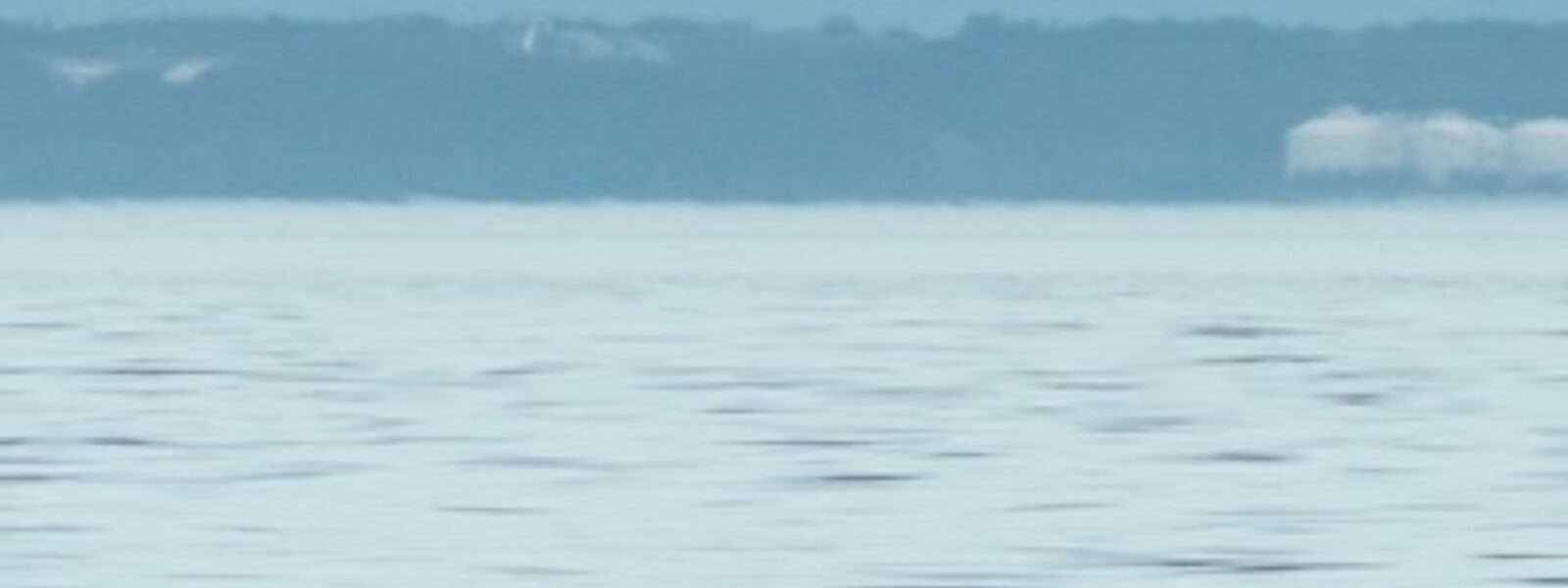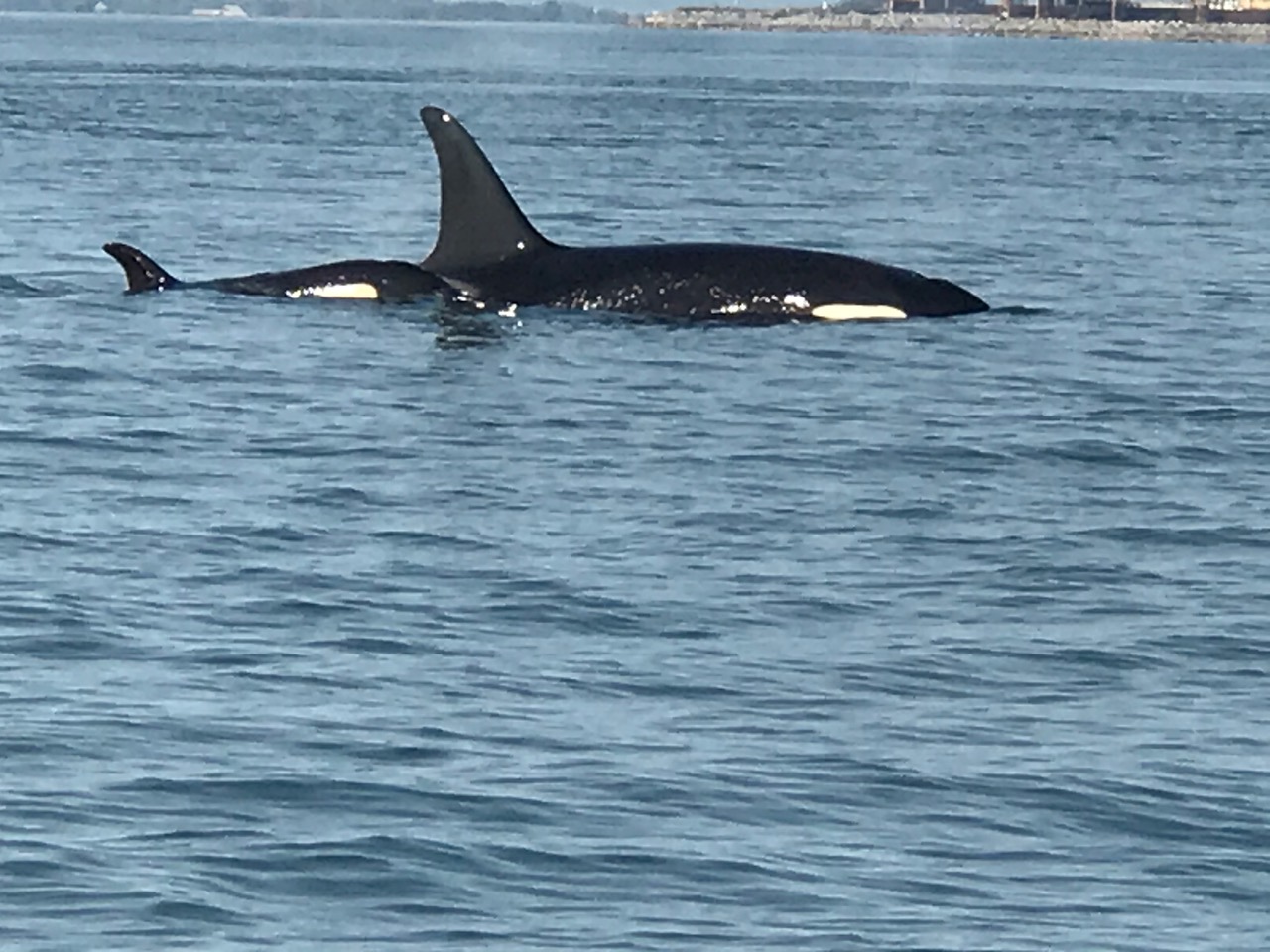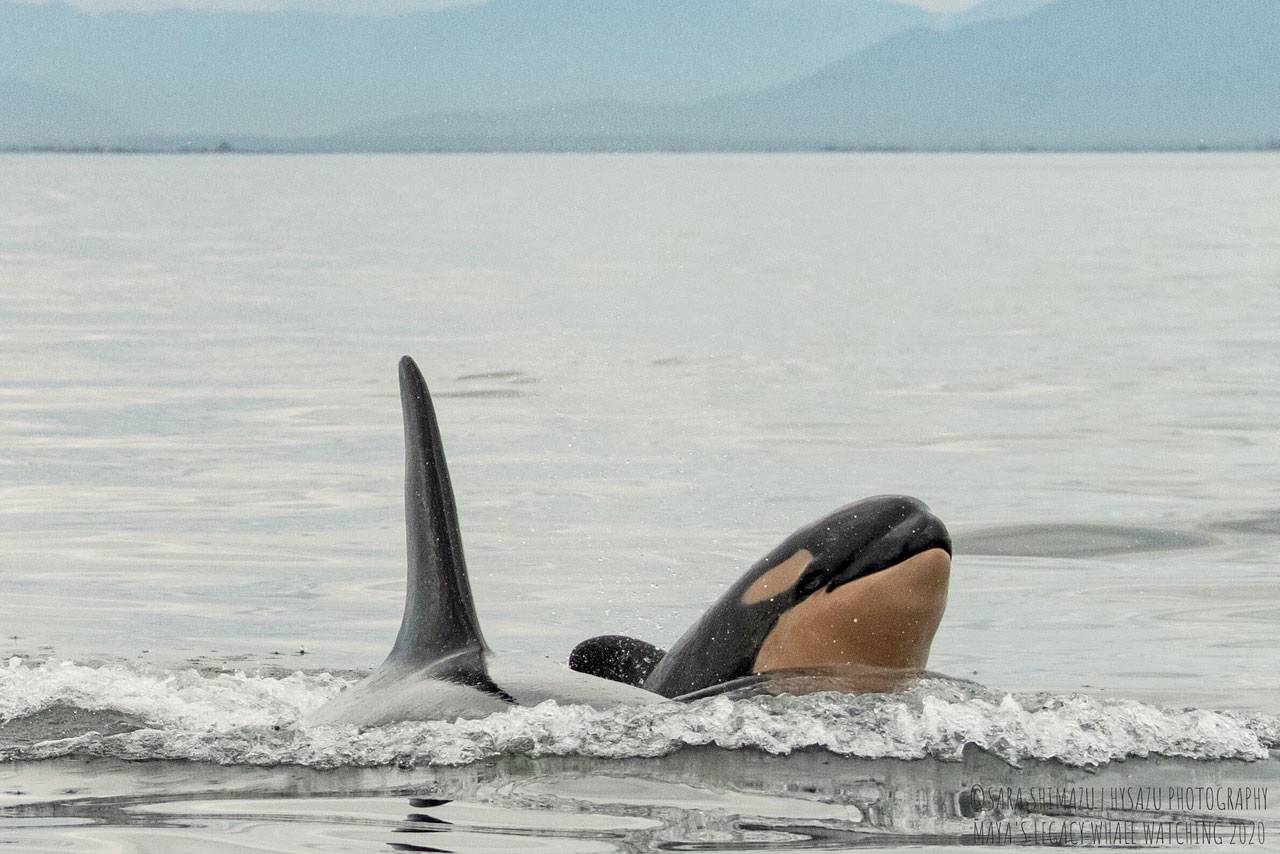
Tahlequah’s New Calf Sparks Hope for the Southern Resident Orca Population
Tara Van Hoorn is an intern with the International Marine Mammal Project (IMMP) of Earth Island Institute and majors in Conservation Resource Studies at the University of California, Berkeley.
Southern Resident Orca Tahlequah (J35), known for carrying her dead calf for 17 days on a “tour of grief” in 2018, birthed a new healthy male calf at the beginning of September, J37. This is great news for the Southern Resident Orca population as their population growth has been stunted over the past few years. The species has experienced a 40% infant mortality rate as they struggle to reproduce and keep their calves alive, so the birth and apparent good health of this calf is crucial to the population’s survival.

Two years ago, Tahlequah caught the world’s attention as she carried her dead calf more than 1000 miles for more than two weeks around the Salish Sea. This death was not abnormal for this unhealthy population. In 2018, this Southern Resident Orca population had not had a surviving calf in three years. Experts believe that this was her coping mechanism for losing her newborn, yet her mourning period lasted much longer than the usual one to two days that orcas mourn the loss of a family member. Researchers hypothesize that her grieving was extended because the calf lived and swam with the pod, allowing Tahlequah to form a bond with the calf, making her loss even harder. This “tour of grief” made us all sympathize with Tahlequah as we realized how much of a toll death takes on us all, including whales.
The Southern Resident Orca population has been struggling in recent years due to a stark decline of their main food source, Chinook salmon. Damming, overfishing, and climate change induced habitat destruction in the Puget Sound region have caused this salmon’s population to crash, leaving little food left for the already endangered Southern Resident Orcas. Chinook salmon are keystone species in the area, providing key nutrients to many levels of the local marine food web. Their 60% decline over the past 35 years has been devastating not only to orcas, but to the entire marine ecosystem. Along with the drop in their food supply, the orca population is also suffering from the impacts of human-generated noise pollution from large vessel traffic, and from fishing and whale-watching boats. This noise ruins their hunting practices in which they heavily depend on echo-location to detect their prey, making it even harder to obtain the nutrients they need.
Southern Resident Orcas are not only endangered living in the wild, but also are at risk of being caught for captivity. Almost sixty members of the Southern Orca community were captured and transported to marine parks for profit and entertainment in the 1970s and '80s. These traumatizing captures ripped orca families apart and negatively impacted the sustainability of the population for generations, causing the current population to continue to struggle.

Despite all of these challenges, Tahlequah has birthed another calf, who appears to be happily and healthily swimming with the pod. Scientists hoped the calf would be a female capable of producing more offspring, but the male calf is still a huge victory for the population. Researchers exclaim that Tahlequah appears to be an anxious mother, using extra precautions to keep her calf safe. Experts believe that the calf has a high likelihood of survival. In fact, witnesses exclaim that the calf appears to be quite energetic and curious, oftentimes poking his head out of the water to explore his new home.
Tahlequah’s successful birth gives hope to this vulnerable population in a time where hope seems to be lacking. Executive Director of the Orca Conservancy, Shari Tarantino expresses great excitement for this calf:
“We are thrilled to see J35 with a new and robust calf! For this small endangered population to stabilize its growth potential, continued work towards increasing stocks of wild, healthy Chinook salmon throughout their entire habitat range is vital. It takes an ecological village to raise an orca. It's never too late to become an important part of Southern Resident killer whale recovery,’ Tarantino concluded.
There are numerous ways to help Tahlequah, orcas, and other marine mammals including supporting IMMP’s marine protection projects, as well as supporting the many organizations in Washington State working to protect orcas. Cutting down meat and fish consumption, shopping from sustainably sourced fisheries, and reducing the amount of boat time you spend in the Puget Sound are also recommended.
